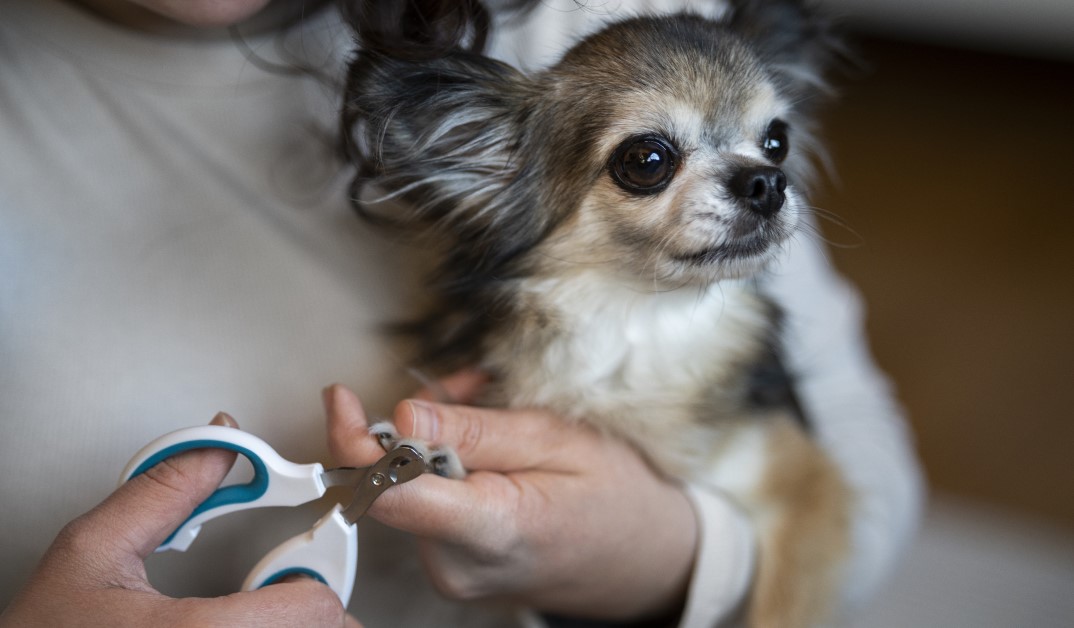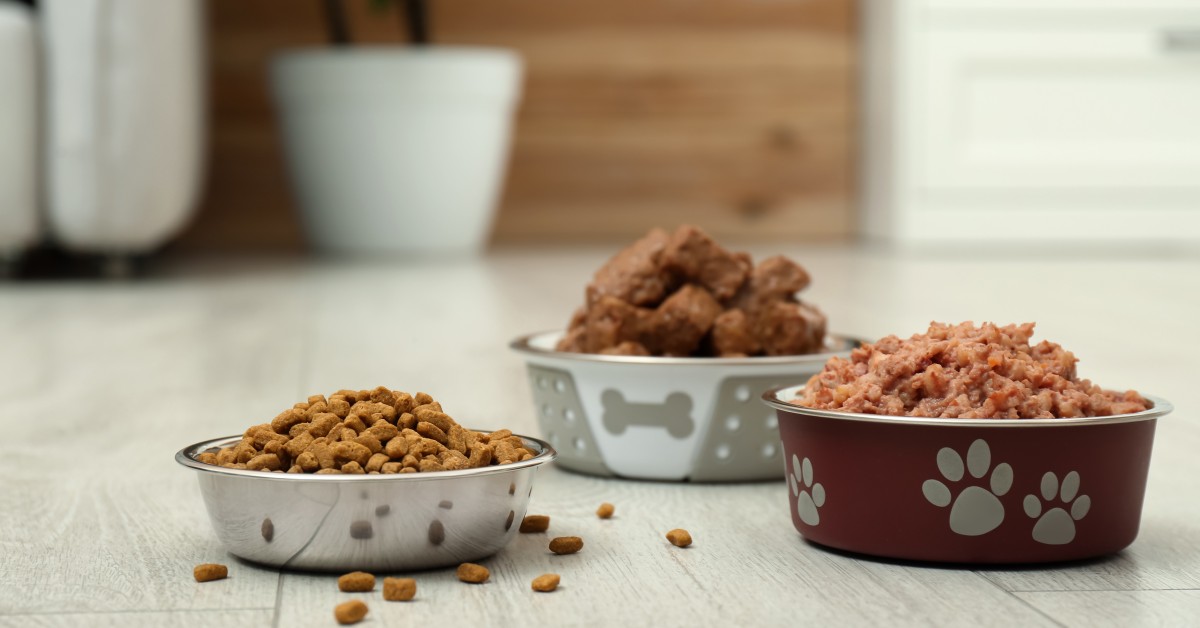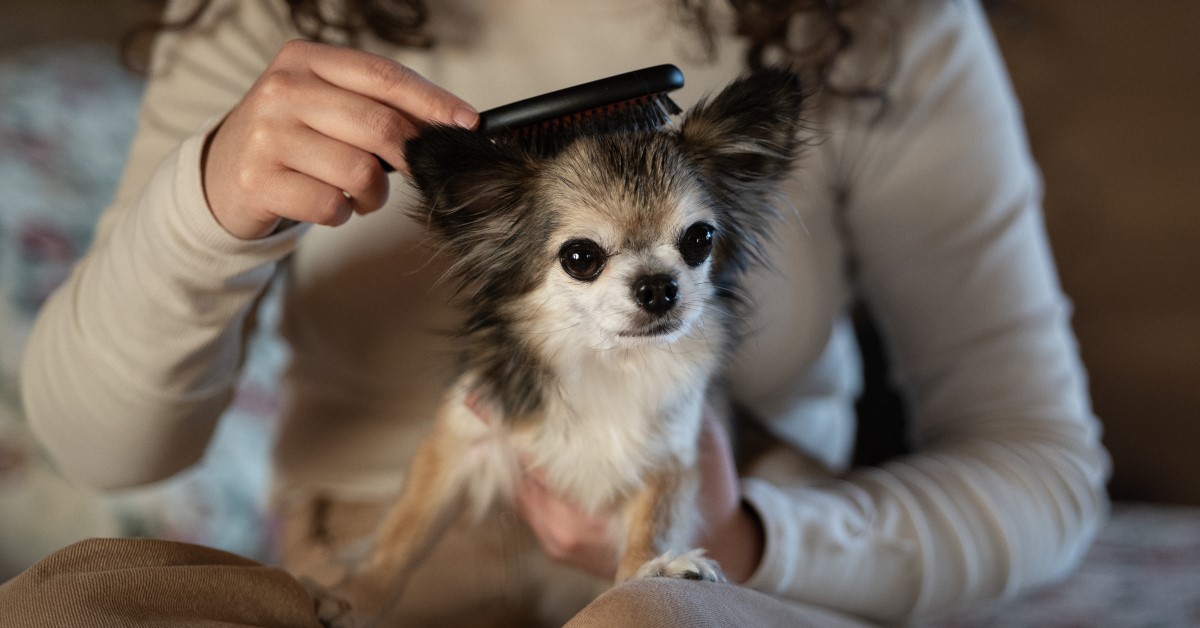Safely Cutting Dog Nails and What to Do If You Hit the Quick
Safely cutting dog nails without hitting the quick takes patience and practice.

That ‘click-clack’ sound as your dog walks across the floor signals that a nail trim is needed. While cutting your pet’s nails seems like a simple job, many pet owners struggle to do it themselves. Not only do many dogs detest having their paws touched, but cutting dog nails, especially dark-colored ones, can be nerve-racking for empathetic pet owners.
The good news is that you can safely and confidently cut dog nails at home without concern that you’ll hit the quick. Let’s look at some nail trim basics and how to cut dog nails, step by step.
How Often Should You Cut Your Dog’s Nails?
Many pet owners wonder about the frequency of nail trims. While each dog is unique in how fast their nails grow, the average dog should have its nails trimmed every four to six weeks. If your pet spends time outdoors walking or running on roads or sidewalks, it may require nail trims less frequently as the concrete will naturally grind them down.
What Tools are Needed to Safely Cut Dog Nails?
Cutting dog nails at home requires a few simple supplies. First, you’ll want a pair of quality dog nail clippers. There are several options on the market, with the most common being guillotine-style clippers that gently and quickly trims the nail. Other options include plier-style and scissor-style clippers which are available for dogs of all sizes.
While dog nail clippers are the only essential tool you’ll need, you’ll also want to have styptic powder on hand. Styptic powder can be found in most pet supply stores and will help stop the bleeding if you should accidentally hit the quick. If your pet’s nail is bleeding and you don’t have styptic powder, cornstarch or flour will also work in a pinch.
How to Safety Cut Dog Nails: Step by Step
When cutting dog nails, the biggest concern is the potential to cut the nail too short, which can lead to hitting the quick. The quick refers to the nail’s soft center which contains nerves and blood supply.
Identifying the quick is fairly easy when a dog has white nails as the quick appears as the pink area at the base of the nail. Dogs with longer nails often have longer quicks.
Cutting dark-colored nails requires a different approach. Instead of taking off a large chunk of the nail at once, you’ll want to take small portions of the nail at a time. As you get near the quick, you’ll see that the inside of the nail appears white and chalky. Stop cutting when you see a black dot appear in the center of the white area, which indicates the end of the quick.
The following steps can help you safely cut your dog’s nails:
- Bring your dog to a quiet place in the home where there are no loud noises or distractions. Have plenty of treats on hand to reward your dog for standing still throughout the process.
- Pick up your dog’s paw and gently but firmly hold it with your non-dominant hand. Push the paw pad down slightly; this should extend the nails forward, making them easier to cut.
- Pick up the nail clippers with your dominant hand and place them on the nail you plan to cut. If you’re nervous about cutting too much, start with a small trim. You can always cut more later.
- Cut the nail straight across the tip. Never cut behind the nail’s natural curve. If there are any rough edges on the nail, use a heavy-duty nail file to carefully round off the rough edges to create a smooth finish.
What Do I Do If I Hit the Quick?
Even if you’re being careful, there’s always a chance you could hit the quick when cutting your pet’s nails. It’s important not to panic if your pet’s nail begins to bleed but you do want to act quickly. Keep styptic powder nearby so that you can easily stop the bleeding. Styptic powder also contains Benzocaine which can help ease your pet’s pain.
Using styptic powder to stop bleeding is simple. Just scoop up a small amount of the powder and press it against the end of the nail for several seconds. If your pet gets blood in their fur due to a bleeding nail, pour a small amount of hydrogen peroxide onto a cotton ball and wipe the blood off the fur.
When to Contact a Professional Groomer
Despite a pet owner’s best intentions, not everyone is capable of cutting their own dog’s nails and that’s okay! If you don’t feel confident trimming your pet’s nails, rely on an experienced groomer to do the job for you. Most groomers offer nail trims at an affordable rate and have the skills needed to work with dogs of all breeds and sizes.
Maintaining your dog’s nails is important for their overall health. Remembering to cut your dog’s nails on a regular basis can help prevent potential problems in the future, such as nail injuries or infections. Trimmed nails also allow your pet to walk, run, jump, and play without hindrance.
Ready to start saving money on pet wellness care?
Then take a look at Mint Wellness, the pet wellness plan that provides fast reimbursement on routine pet care. Save on vaccinations, wellness exams, preventatives, dental, and more!
Learn More


